Going back to the days when Ely ran the show, Callaway Golf has sought to create products that are pleasingly different and demonstrably superior.
That last part will be judged in testing and, I suppose, by each of our individual experiences with the Paradym Ai Smoke driver.
The first half?
Well …
There’s an element of subjectivity to that, though I will say that, relative to its competitors, Callaway’s 2024 story is different, perhaps even pleasingly so.
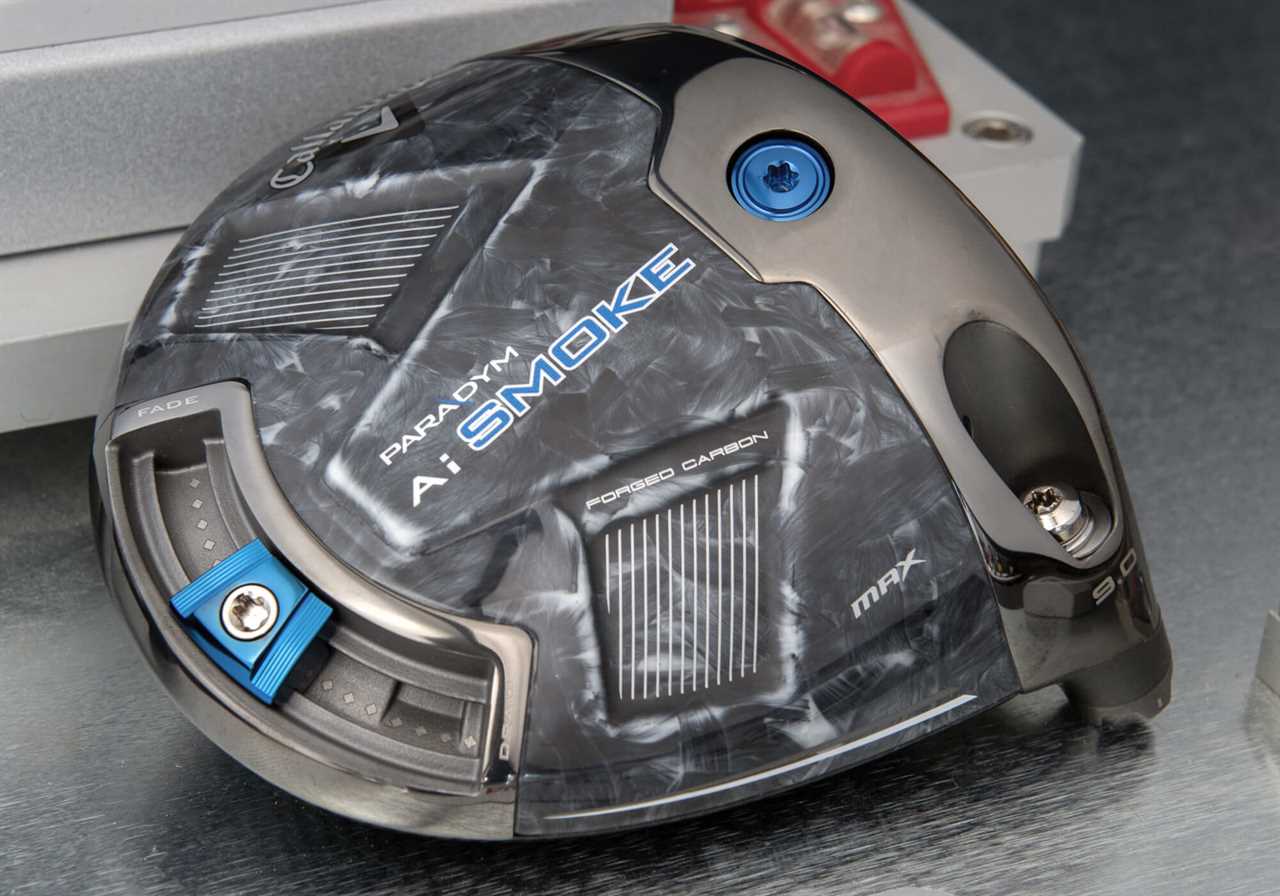
For better or worse, it all boils down to Callaway’s latest implementation of what has become the most overused acronym in golf—and the whole wide world for that matter.
I’m speaking, of course, about AI (artificial intelligence) and machine learning. (Callaway uses “Ai” just to be different.)
For its part, Callaway has officially been in the AI game since Epic Flash but the AI story took a bit of a back seat to Paradym’s 360 Carbon chassis last year. That shouldn’t suggest the machines stopped running.
As we transition to Paradym Ai Smoke, artificial intelligence and machine learning have re-emerged as the driving force of the Callaway story.
2024 – The Year of Straight
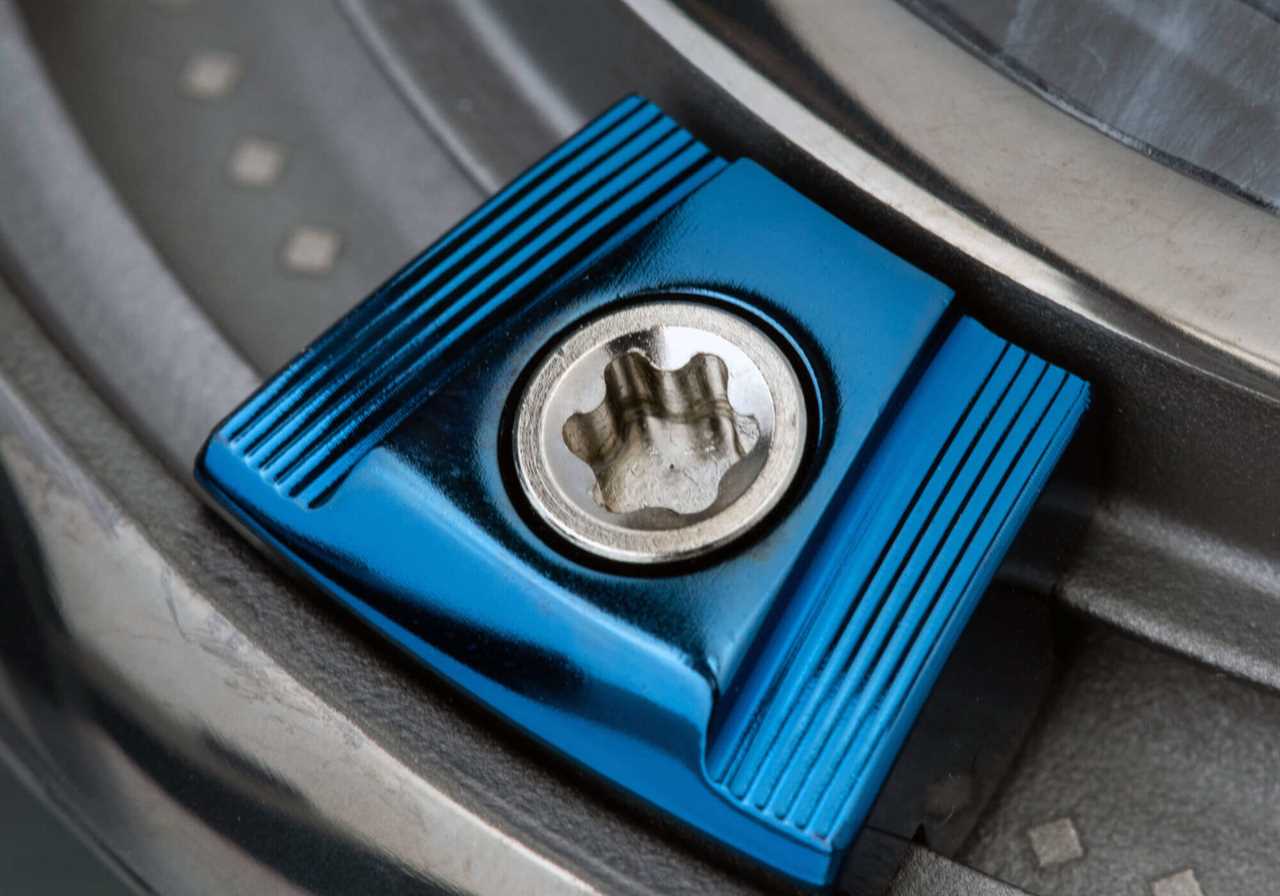
As we move through the January releases, it will become evident that, in the driver category anyway, 2024 is the Year of Straight.
While distance will always be part of the conversation, you should expect to hear more about straight drives and tighter dispersion than you have before.
With that in mind, it’s not so much what Callaway is doing that’s different (pleasingly or otherwise), it’s the approach that’s unique.
While its competitors are literally reshaping drivers and pushing MOI higher than ever before, Callaway is leaning into AI to accomplish much the same thing without making drivers that look huge, spin a ton or sacrifice ball speed—all of which can be on the table when the pursuit of MOI is the objective.
What’s In a Name?
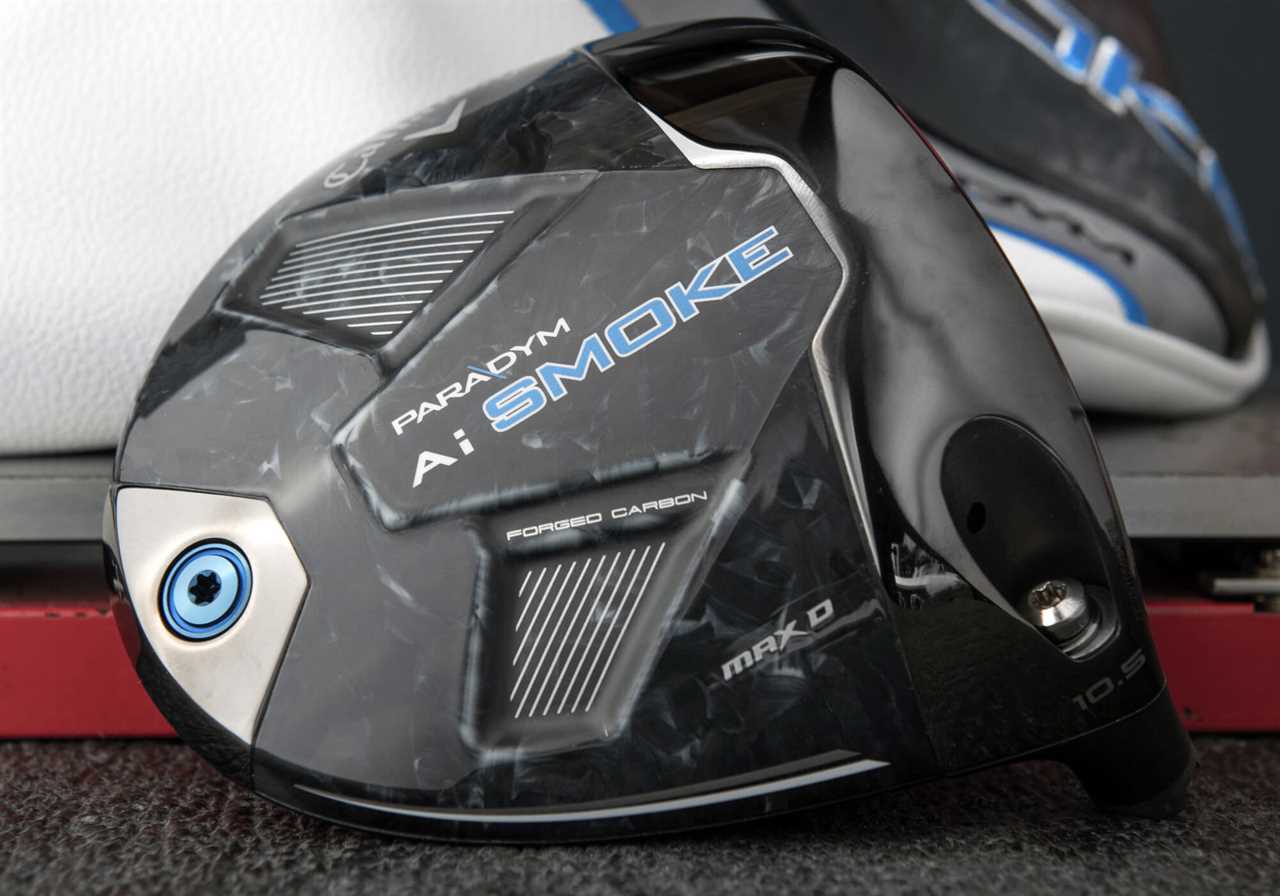
I suppose what you can take from the name (Paradym Ai Smoke) is that Callaway went to great (character) lengths to avoid naming the driver Paradym 2.
The company might have gotten away with it considering Paradym 1 was the leader in global market share but as the golf season winds down, that type of retail success stories tends to fade.
You were No. 1? Cool story, bro, but what have you done for me lately?
And by “lately”, I mean right this minute.
Callaway Paradym Ai Smoke – The Simple Stuff
In most cases, those answers are iterative and boilerplate.
Case in point: the 360 Carbon Chassis is more efficient. Despite no longer being entirely carbon, Callaway has added some titanium supports to the Paradym Ai Smoke’s chassis. It’s perhaps counterintuitive but the refined design allowed Callaway to save six grams because it was able to use thinner carbon fiber.
Instead of forged carbon fiber only, the Paradym Ai Smoke driver sole features a blend of forged carbon fiber (on the exterior and in areas where non-uniform thickness is required) and sheet fiber for added strength.
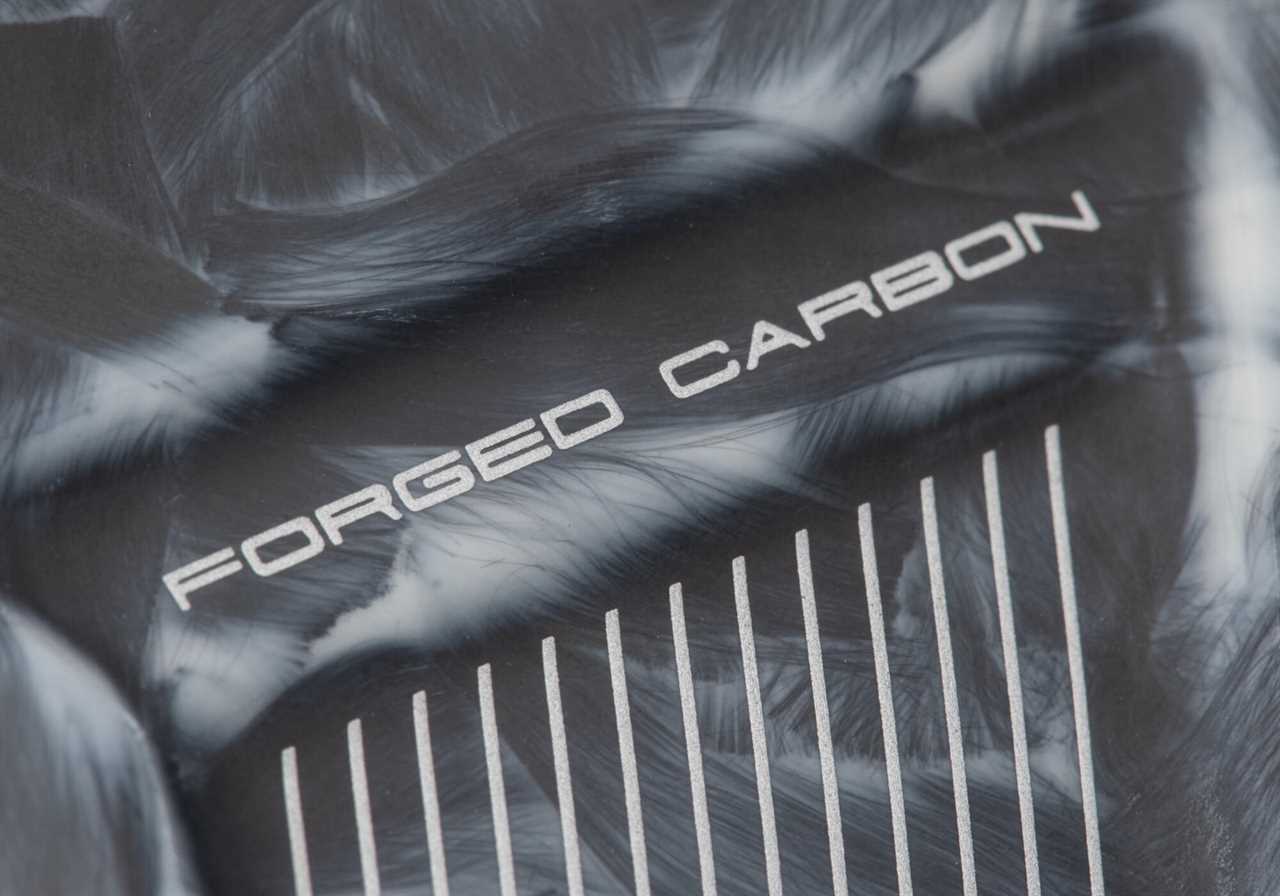
Those weight savings get you a lower center of gravity in the Max model which reduces spin by 200 rpm over Paradym.
Toss in the requisite refined shaping and you’ve got enough for a pretty solid Paradym 2 story.
The thing is, all of the above was given only a passing mention by Callaway’s R&D team.
To fully understand what Callaway Paradym Ai brings to the table (and why this is way more than a Paradym 2), we’re going to need to introduce you to a few new concepts, the first of which is what Callaway calls Swing Code.
Of course, if you just want a basic understanding of which model might be right for you, feel free to skip to a breakdown of the four models.
Swing Code
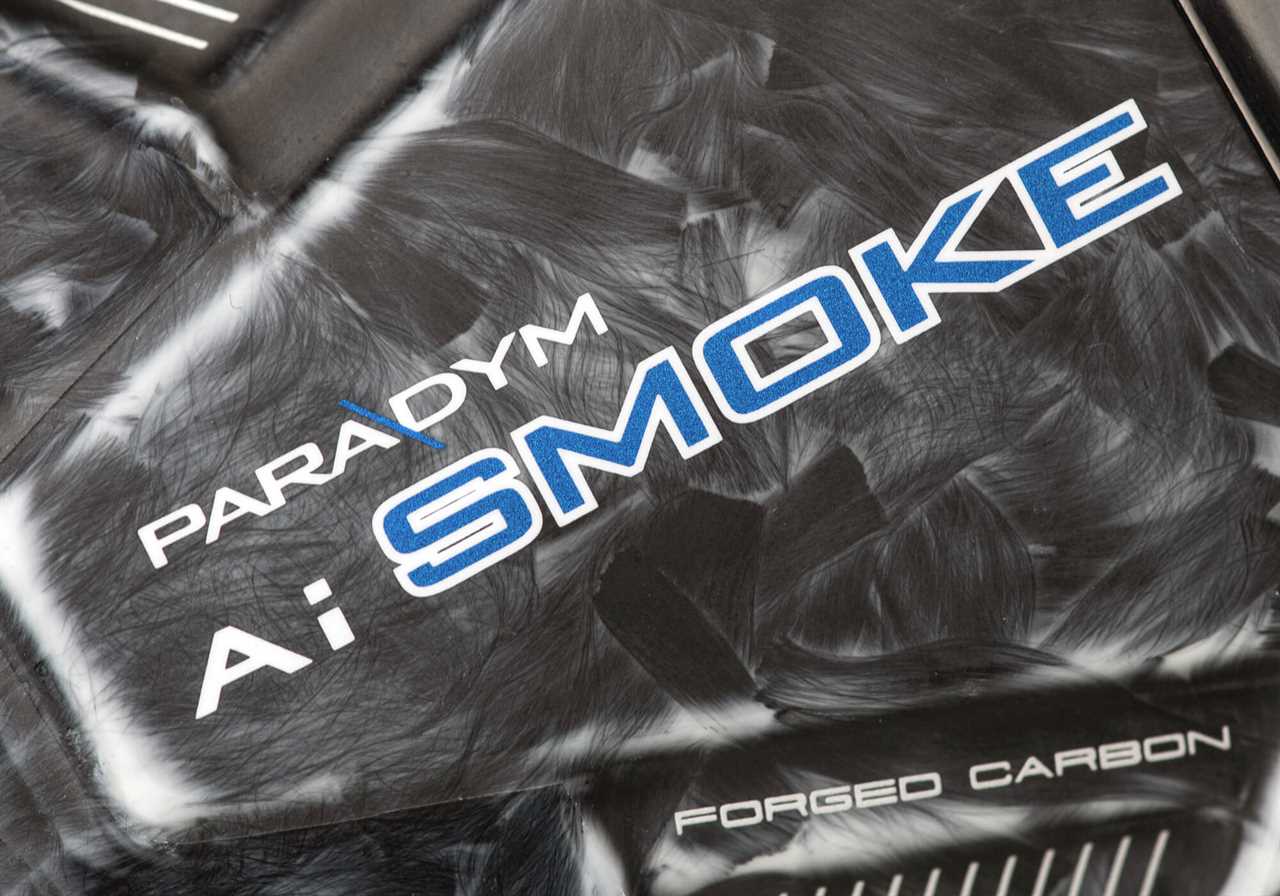
At the most basic level, Swing Code speaks to the idea that no two golf swings are the same.
Obvious enough, but Callaway’s thinking was that if it could leverage AI and machine learning to build something that more realistically models how real golfers deliver the club, the resulting products would lead to better outcomes on course for everyone.
Again, kind of obvious, which is why it’s worth stepping back and understanding that golf clubs are typically designed in what you might call a neutral environment. Engineers look at how the face flexes on perfect or near-perfect swings and then design around those findings.
The typical nine-point robot test is a good example. Neutral path, neutral attack angle, square face, heel clank. It tells you something but it doesn’t necessarily replicate what golfers are going to experience on the course.
Think about it. How often do you hit the ball off the heel with a square face and a neutral path?

Swing Code seeks to more realistically model the club deliveries that produce any given impact locations. What are the common club delivery elements associated with a heel shot? That’s what we’re getting at.
To be sure, Callaway isn’t alone in this approach. As we move deeper into golf’s digital age, golf’s biggest brands are relying less on robots and instead are leveraging computing horsepower to capture and model massive amounts of data from human golfers.
The big picture idea is that if you have a deeper understanding of what happens when humans swing golf clubs, you can optimize your designs for them and, theoretically anyway, you can produce a better individualized outcome on the golf course.
What does that mean? Bear with me for a moment.
Feeding the Machines
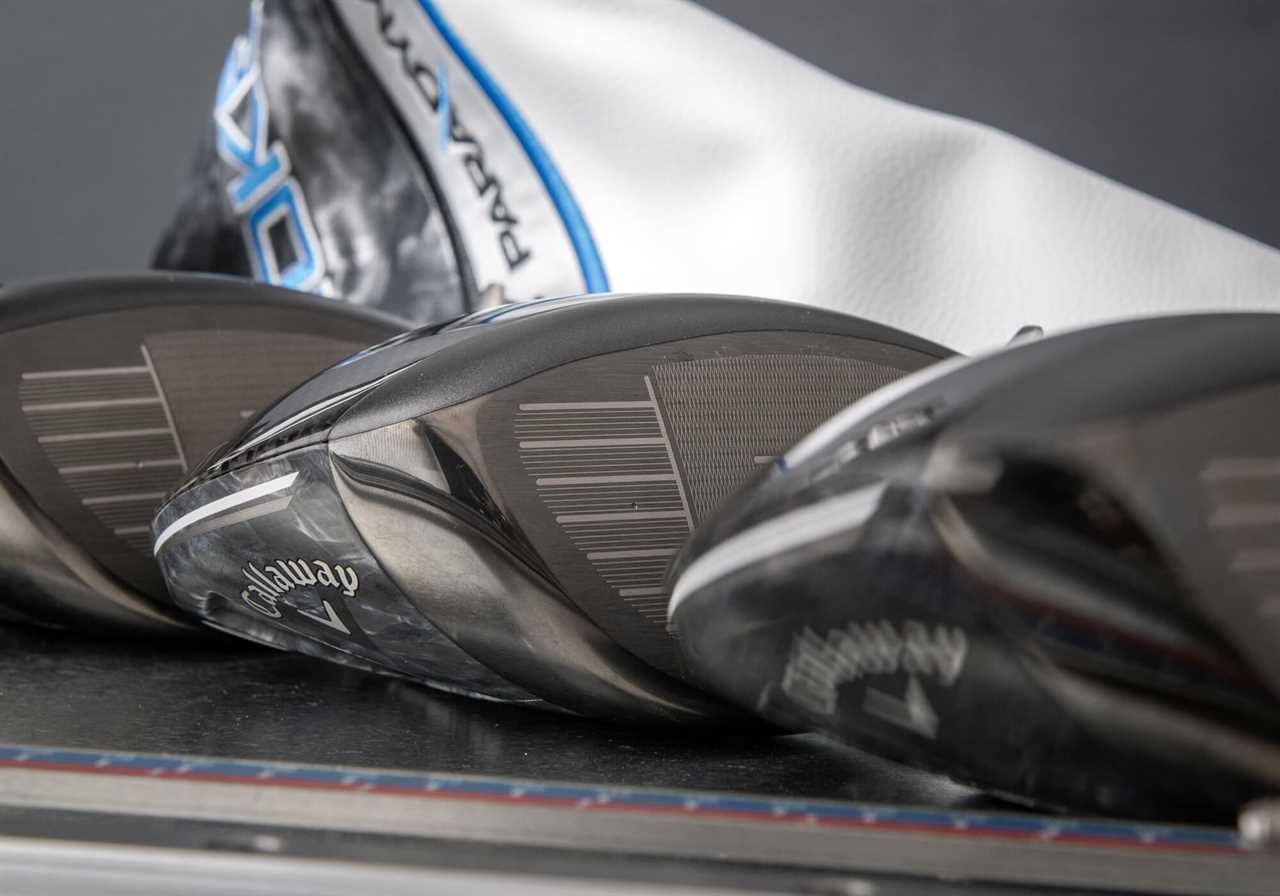
Callaway’s Swing Code is the result of more than 250,000 human swings collected in Callaway fitting environments including everyone from recreational golfers to PGA Tour pros.
Swing Code, which includes things like speed, impact location, attack angle, path and face-to path relationship, are the inputs that feed Callaway’s AI machines.
It’s the foundation that allows Callaway to sort and classify swings into groups and then design driver faces optimized for the tendencies of those specific groups.
Again, this isn’t some robot-driven extrapolation of impact conditions. It’s all driven by how real golfers swing their clubs.
AI Face Optimizations
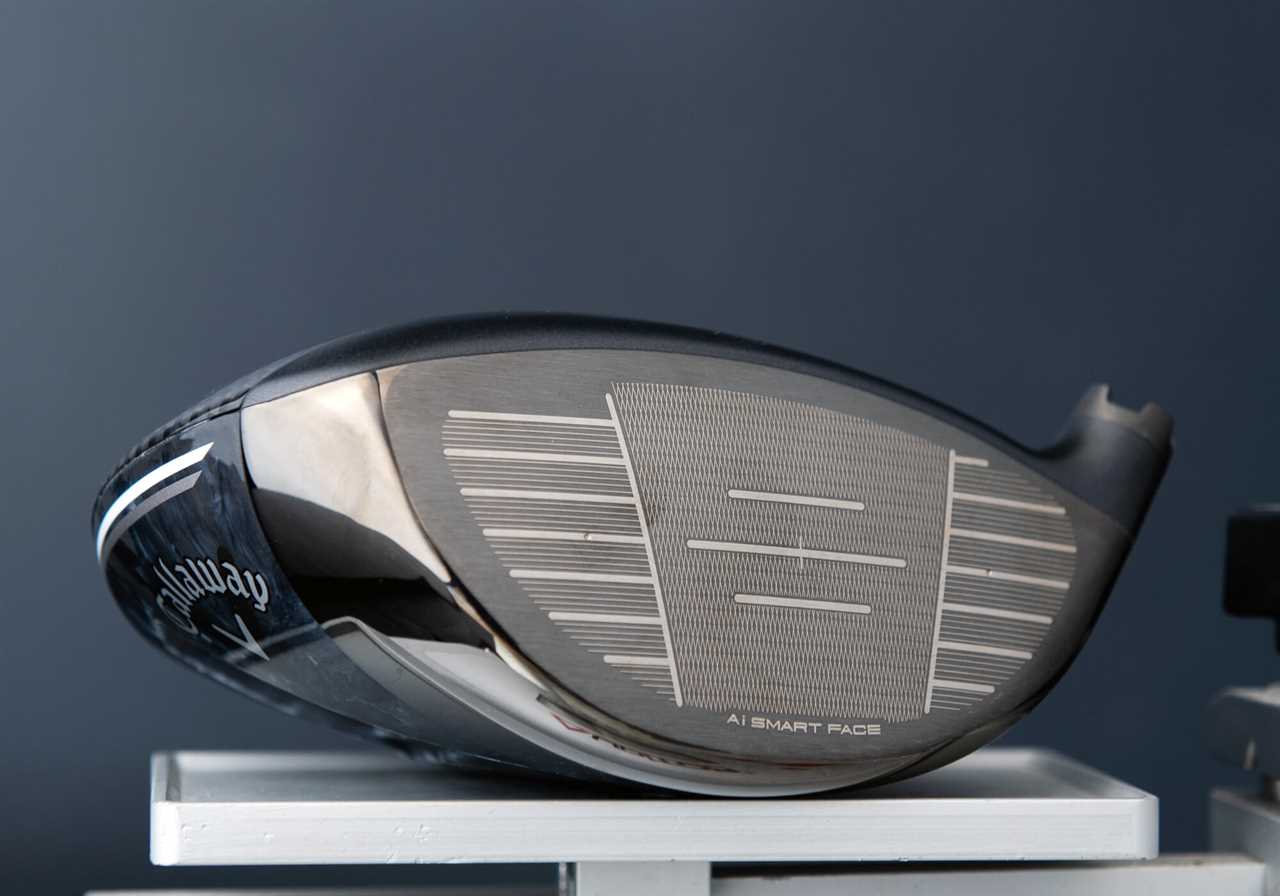
Callaway Paradym Ai Smoke Max D
You can think of Swing Code as the input. Callaway’s AI Face Optimizations are the output.
With an emphasis on down-range dispersion, Callaway’s latest modeling system predicts outcomes based on impact location and swing deliveries (aka Swing Code).
Armed with that information, the machine learning kicks into gear, testing what amounts to virtual prototypes. It’s worth mentioning that as it has continued its AI journey, Callaway has significantly increased its capabilities.
In the past, Callaway would run about 12,000 simulations but with Paradym Ai Smoke, that number climbed to 50,000 impact simulations. With each simulation, the underlying face topography iterates and improves.
For context, the difference between the 5,000th iteration and the 50,000th is roughly a 60 percent decrease in downrange dispersion area.
Simulate. Iterate. Repeat.
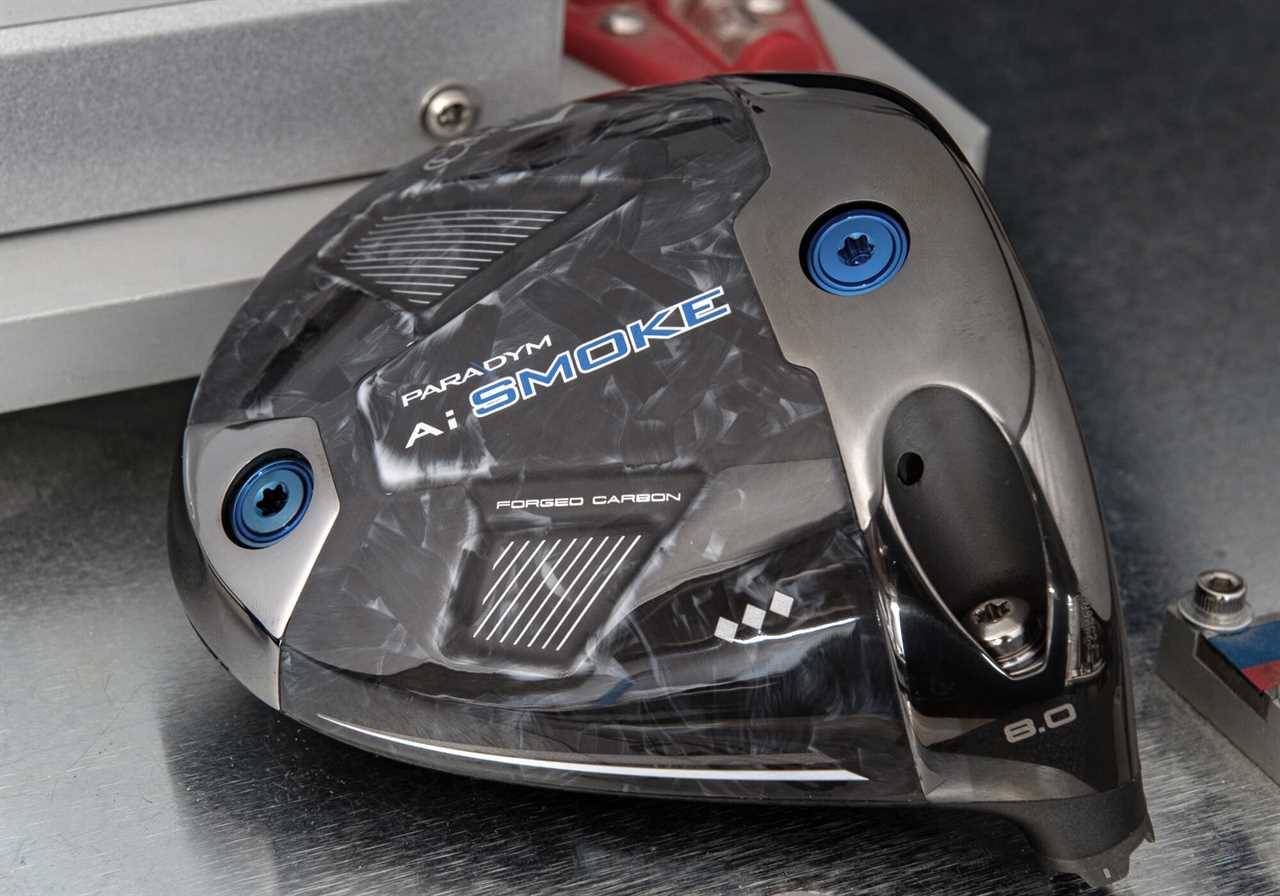
When AI arrives at the optimal solution, Callaway can make and test physical parts. It’s the equivalent of testing 50,000 faces when, historically, they’d be able to test fewer than 10. Even if the results are anything but intuitive, the process quickly eliminates bad ideas and helps get to optimal faster.
For full context, to develop Paradym Ai Smoke’s faces, Callaway leveraged more than a million data points and tested 50,000 virtual face iterations. For those of you who really love nerd shit, we’re talking about 80,000 lines of code.
With a dozen data scientists on the payroll, it’s not a stretch to describe Callaway as a tech company where computing horsepower and software have arguably surpassed conventional design methods in importance.
Callaway says the benefits of the Swing Code approach were apparent with the first prototype. So, I suppose, if the question is what is AI really doing for Callaway, the answer is that it allows engineers to identify the optimal solution for more players more quickly and more confidently than it could before AI.
In the case of Paradym Ai Smoke, it’s three unique face designs tailored to match the swing code of the target golfer.
All of the above gets rolled into what Callaway has branded Smart Face.
Micro Deflections
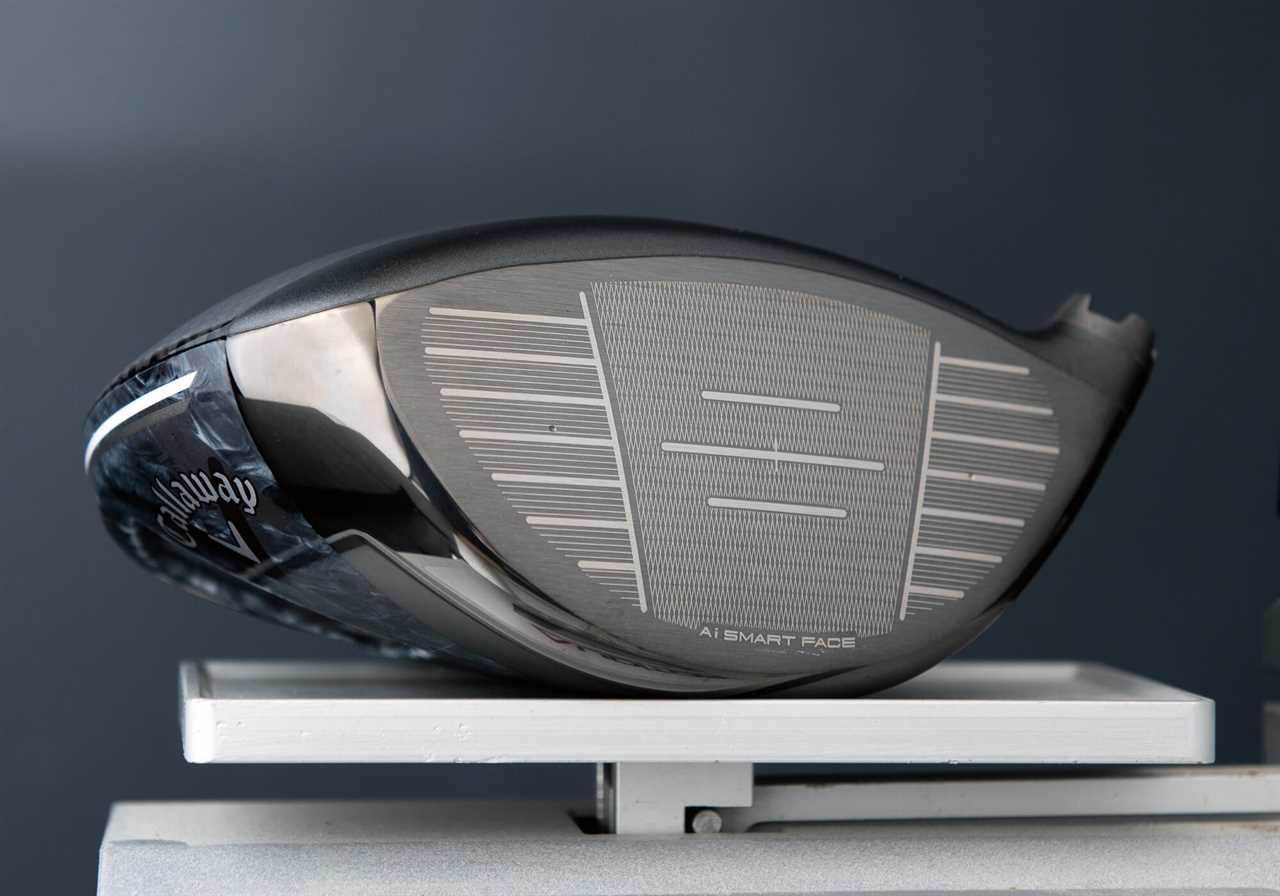
Callaway Paradym Ai Smoke Max
The last concept to understand (and the piece that’s going to bring all of this together, I hope) are what Callaway calls Micro Deflections.
Micro Deflections describe Callaway’s ability to control the localized flexure of its Smart Face.
The idea is that while most faces flex in a mostly uniform manner, the way Callaway’s Smart Face flexes in the heel can be significantly different than how it flexes on the toe or at any point in between.
Fundamentally, Callaway believes its Smart Faces flex differently than others and that the unique rippled topology resulting from its AI Face Optimizations gives it greater ability to control how the ball reacts at a specific impact location.

For example, most of us understand that a heel strike produces a ton of cut spin. It’s part of the reason why slicers slice.
In the heel, Smart Face’s micro deflections work to resist the gear affect. Callaway isn’t saying Micro Deflections overcome physics entirely, but the company says it is able to reduce cut spin relative to other designs which leads to better downrange outcomes.
Likewise, micro deflections in the toe area help fight hook spin without adversely affecting results elsewhere on the face. More local than global, Micro Deflections work to produce a better outcome from more narrowly defined areas of the face.
Isn’t that Just Bulge and Roll?
 Callaway Paradym Ai Smoke Triple Diamond
Callaway Paradym Ai Smoke Triple Diamond
Traditionally, club designers rely on bulge and roll for a similar result. The difference is that while bulge and roll impact the starting line, they don’t alter how the ball spins, at least not in isolation.
And yeah, this is similar to what PING seeks to accomplish with its Spinsistent faces and what TaylorMade hopes to achieve with Twistface. Callaway’s approach is different in that’s it’s not relying on face curvature to achieve the desired result.
Callaway says Micro Deflections work to decouple launch and spin—and to an extent speed—which gives it the ability to pull whatever lever that’s going to be most effective for a specific impact location, for a given Swing Code and, by extension, the target golfer.
To put a visual to this, think about your typical launch monitor shot grouping. Callaway says that conventional face designs work to shift the ellipse. For example, draw-biased designs work by pulling the dispersion ellipse to the left. With Smart Face and Micro Deflections, Callaway says Paradym Ai Smoke Drivers shrink the ellipse and tighten dispersion significantly.
The ultimate objective of all of this is better outcomes defined by straighter shots with tighter dispersion. And, yeah, you’ll get the requisite distance, too.
Paradym Ai Smoke Smart Face Versus MOI
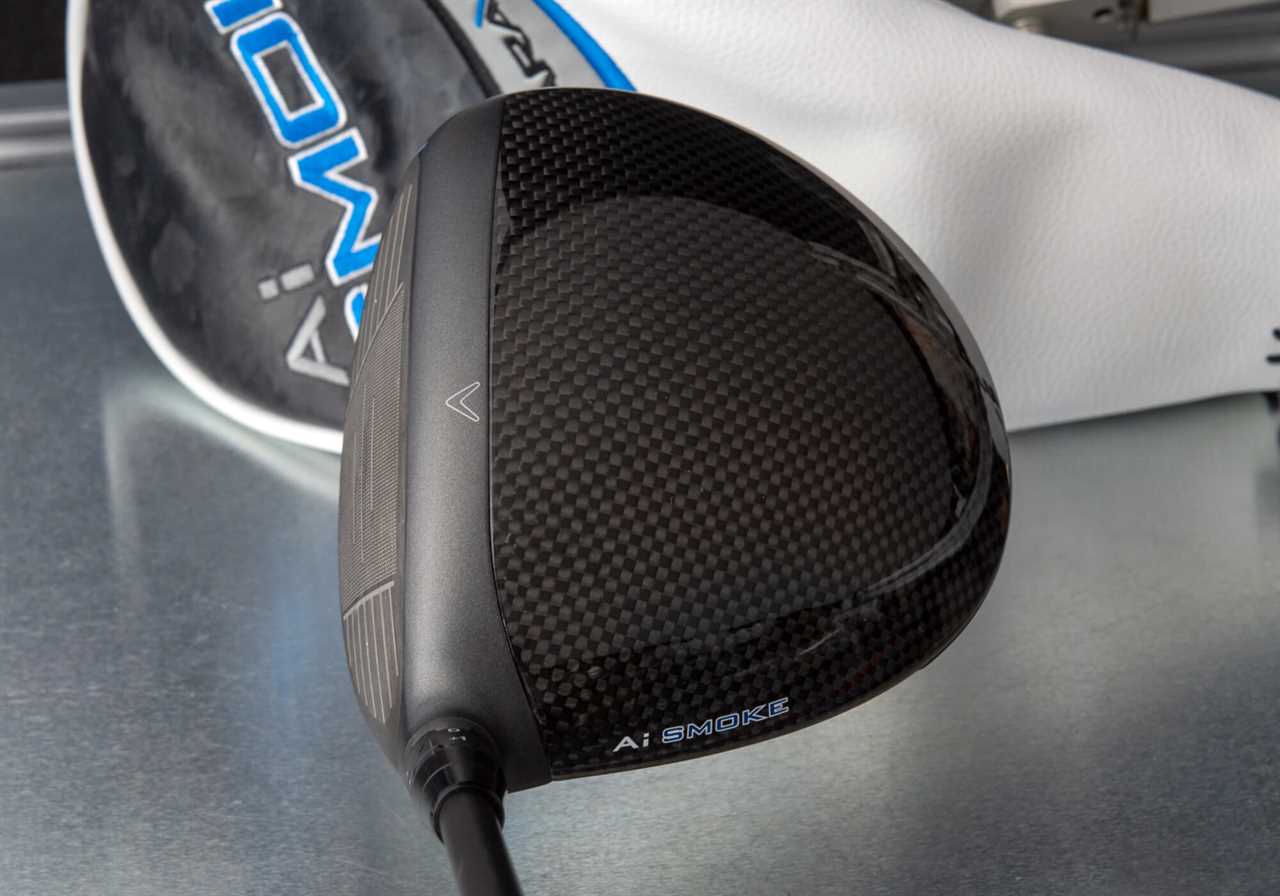
Callaway Paradym Ai Smoke Max D
You’re going to hear a lot this season about high MOI (moment of inertia) and straighter golf shots. We know MOI works but Callaway’s Smart Face design aims to accomplish a similar result without some of the compromises that often accompany high MOI designs.
At a basic level, MOI is a way to make a golf club more stable and forgiving. With that, higher MOI designs will do a better job of retaining ball speed across the face and, to an extent, producing straighter shots.
It’s why MOI is often conflated with Forgiveness.
MOI is absolutely part of the typical forgiveness formula but is it the only way to achieve forgiveness?
Callaway doesn’t think so.
Paradym Ai Smoke drivers still have reasonable MOI (typically middle of the road by market standards) but through Smart Face and Micro Deflections, Callaway believes it can avoid the trade-offs.
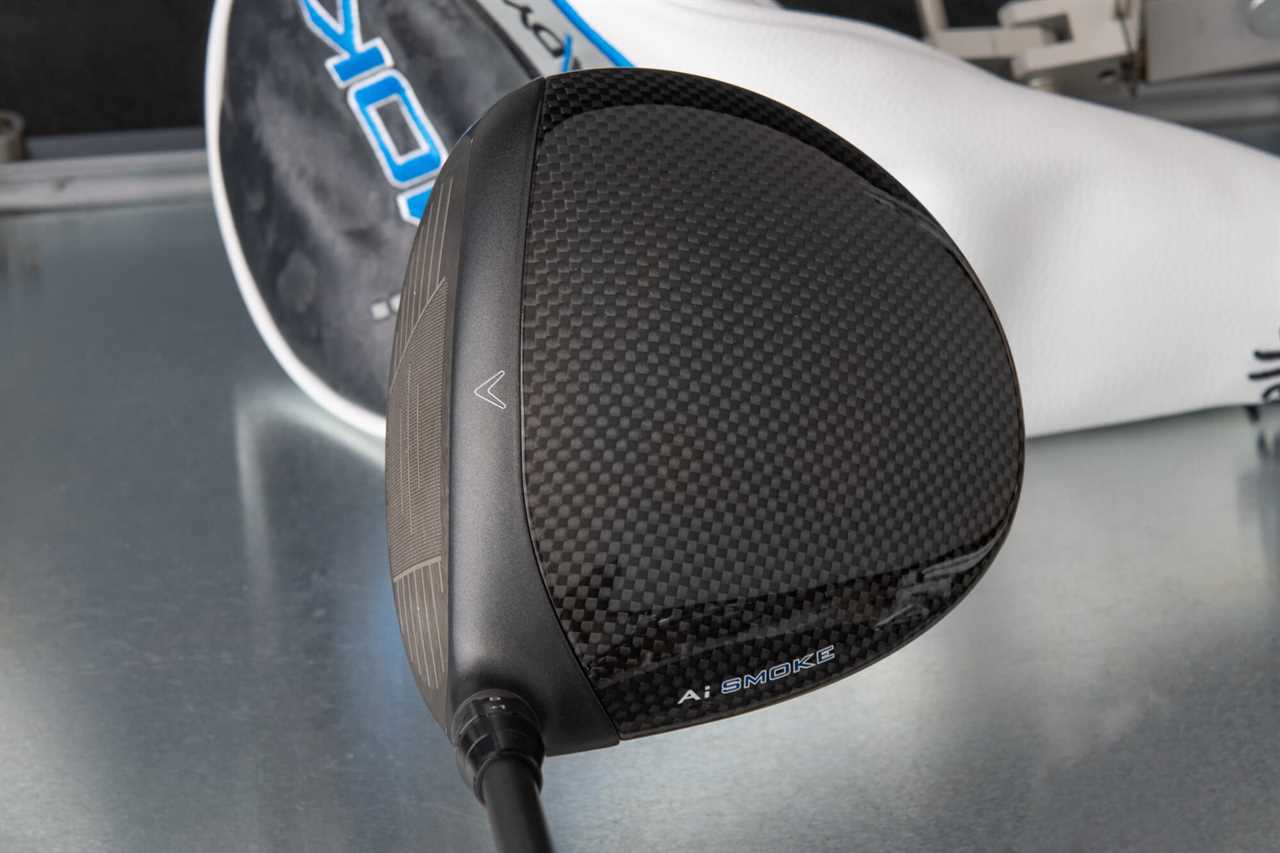
Callaway Paradym Smoke Ai Max Driver
Specifically, high MOI often brings with it higher spin, often leading to a drop in ball speed. Head shapes are invariably larger, which are sometimes more than golfers want to look at and can sometimes result in swing speed drops. And not for anything, the USGA has limits and, if we’ve learned anything from the golf ball rollback, it’s that those limits are subject to change.
So how does Callaway’s approach compare to traditional methods of creating consistency?
While the math is admittedly complex and Callaway is reticent to put a specific number on it, the company believes the downrange results will be on par with total MOI values above 10,000 without any of the traditional trade-offs.
Callaway may not talk much about MOI comparisons, but it will come to market with significant performance claims relative to Paradym. Impact point for impact point, Paradym Ai Smoke bests Paradym, though Callaway admits the biggest gains are in low-probability impact locations (i.e., my sweet spot) but,overall, golfers should expect to see measurably better results.
That’s kind of the universal side of things.
Golfers whose personal Swing Code closely matches the inputs that led to the Ai Optimized Smart Face designs should see better performance still.
Callaway Paradym Ai Smoke Driver – 4 Models
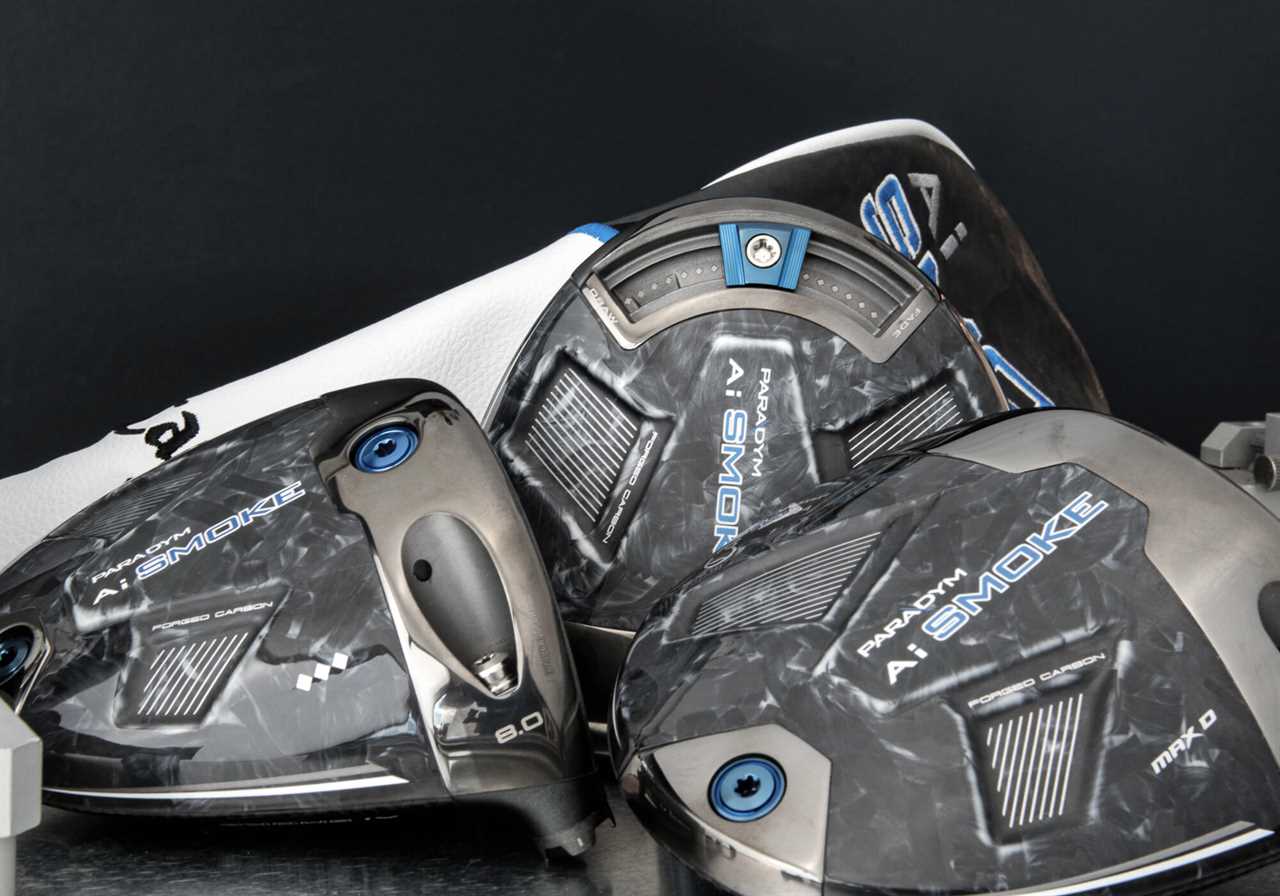
With all of that out of the way (Was that a lot? It felt like a lot), let’s take a closer look at each of the four driver models in the Paradym Ai Smoke lineup and the Swing Code each is optimized for.
Technically, Callaway is launching four Paradym Ai Smoke Driver models, though if you wanted to call it 3.5 (not sure Max Fast counts as a unique model), I’d be OK with it.
Callaway Paradym Ai Smoke Max
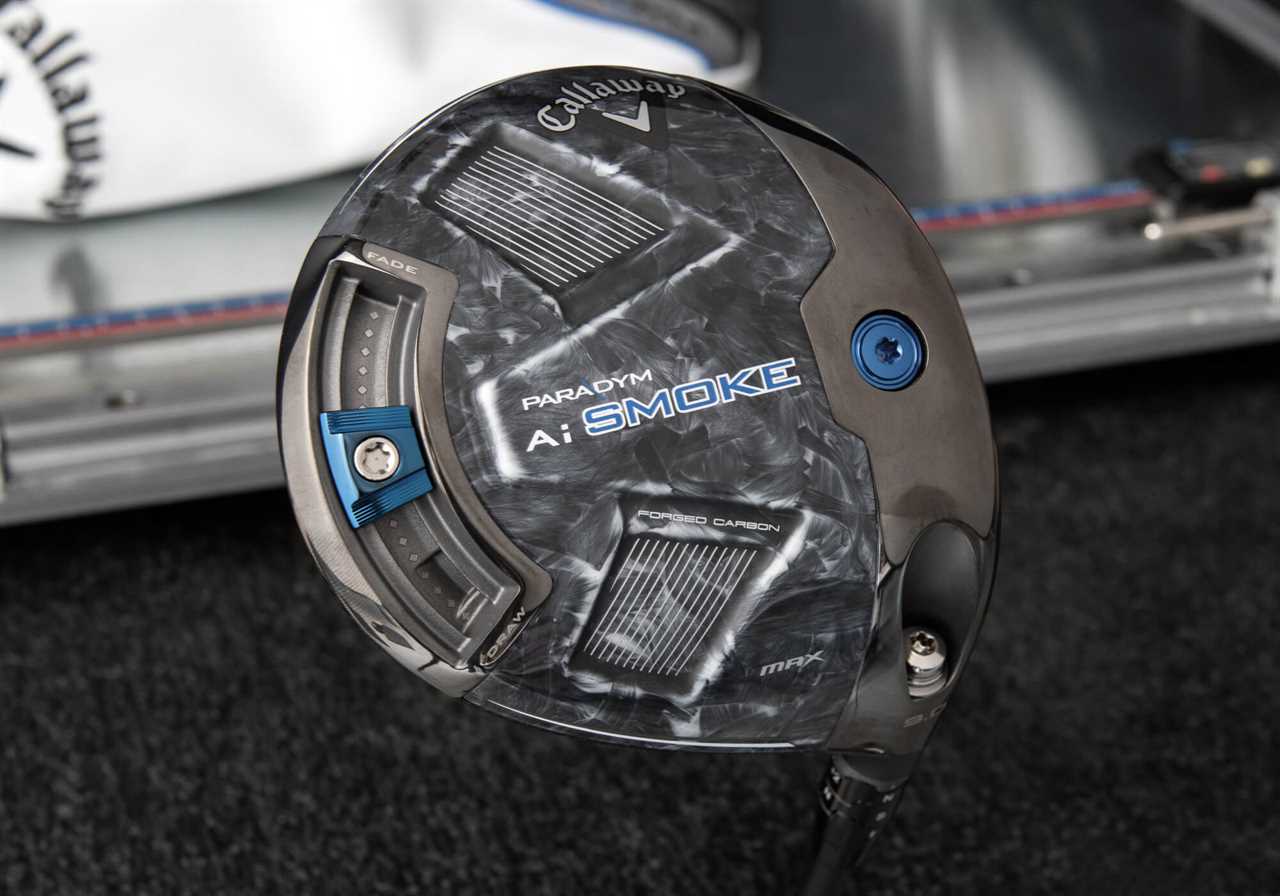
The replacement for last year’s suffix-less Paradym is the Paradym Ai Smoke Max.
Like the standard Paradym, this year’s Paradym Ai Smoke Max is your “middle-of-the-road, best-fit for most golfers” model.
Why the subtle name change?
Callaway felt that adding “Max” to the name would help remove confusion over which Paradym Ai Smoke model we (and golfers) are talking about (or looking for) at any particular time.
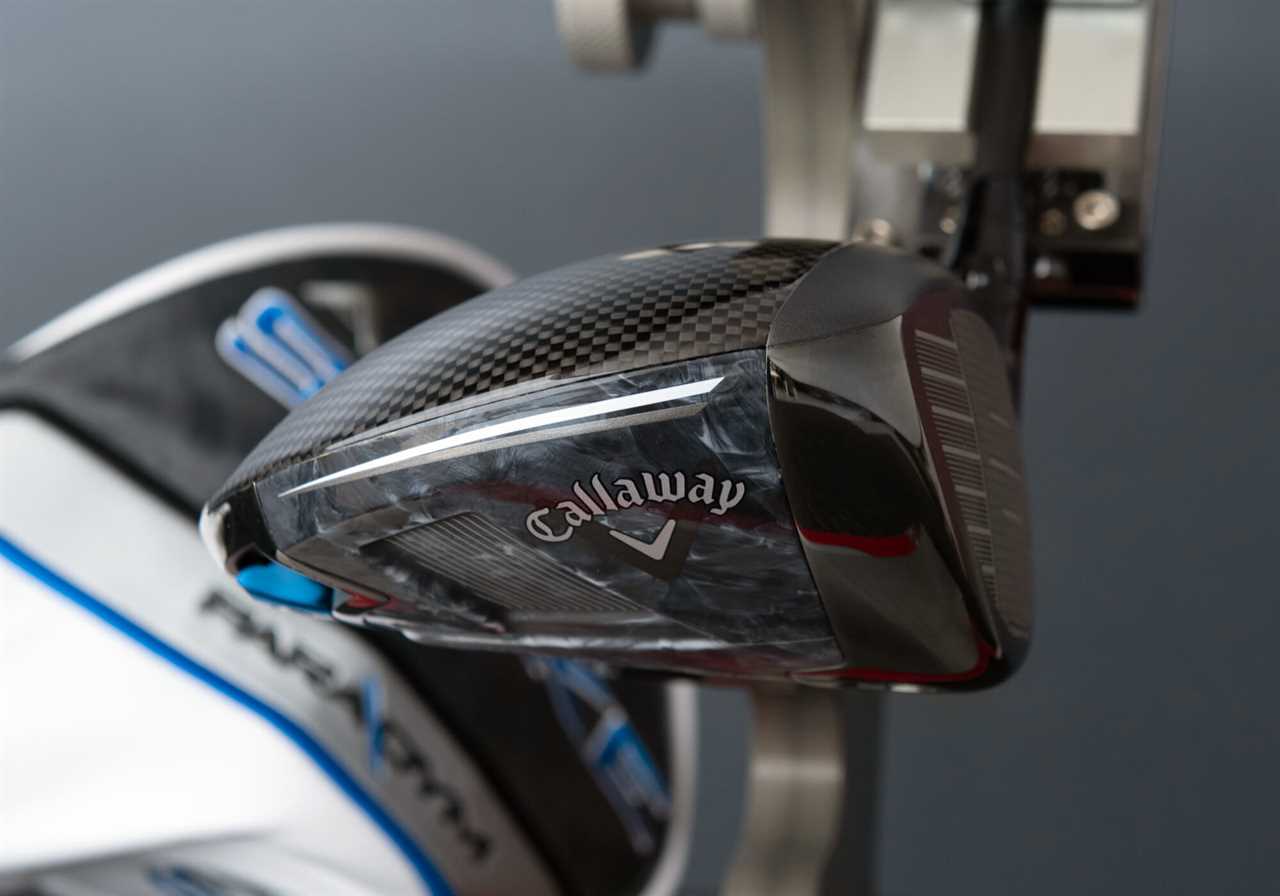
As discussed, Callaway’s Max isn’t going to push MOI limits like others will this year but, by conventional measures, it should be the most forgiving in the Paradym Ai Smoke family.
From the perspective of Callaway’s Swing Code, the Paradym Ai Smoke Max is for the golfer who:
- Uses most of the face
- Swings 90-100 mph
- Has a slightly upward attack angle
- Has a path that’s slightly out-to-in with a face slightly open to that path
Compared to last year’s Paradym, MOI is about the same, but with the lower center of gravity, you can expect a spin reduction of about 200 rpm. The adjustable perimeter weight adds shot shape correction for those who need it.
The Callaway Paradym Ai MAX is available in nine, 10.5 and 12 degrees.
Callaway Paradym Ai Smoke Max D
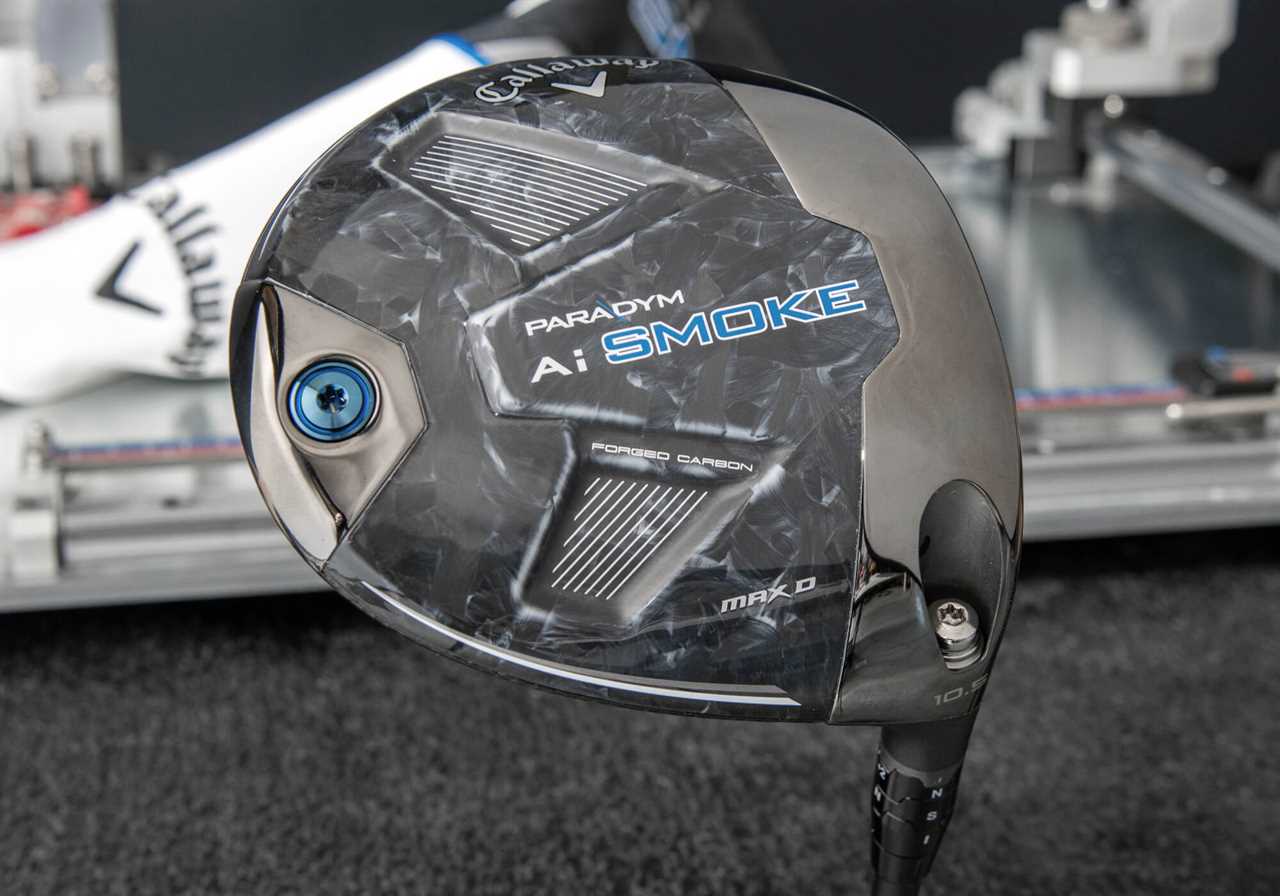
As the “D” implies, the Paradym Ai Smoke Max D is Callaway’s draw-biased model. The Swing Code is a golfer who:
- Hits the ball from the low heel to the high toe (uses the whole damn face)
- Swings 75-90 mph
- Has a downward attack angle
- Swings out-to-in with a face that’s open to the path
Simplified, it’s for the guy who slices the ball.
Callaway says the Paradym Ai Smoke Max D is more of a true draw model than last season’s Paradym X. The name was changed back to D to be really obvious about what it is.
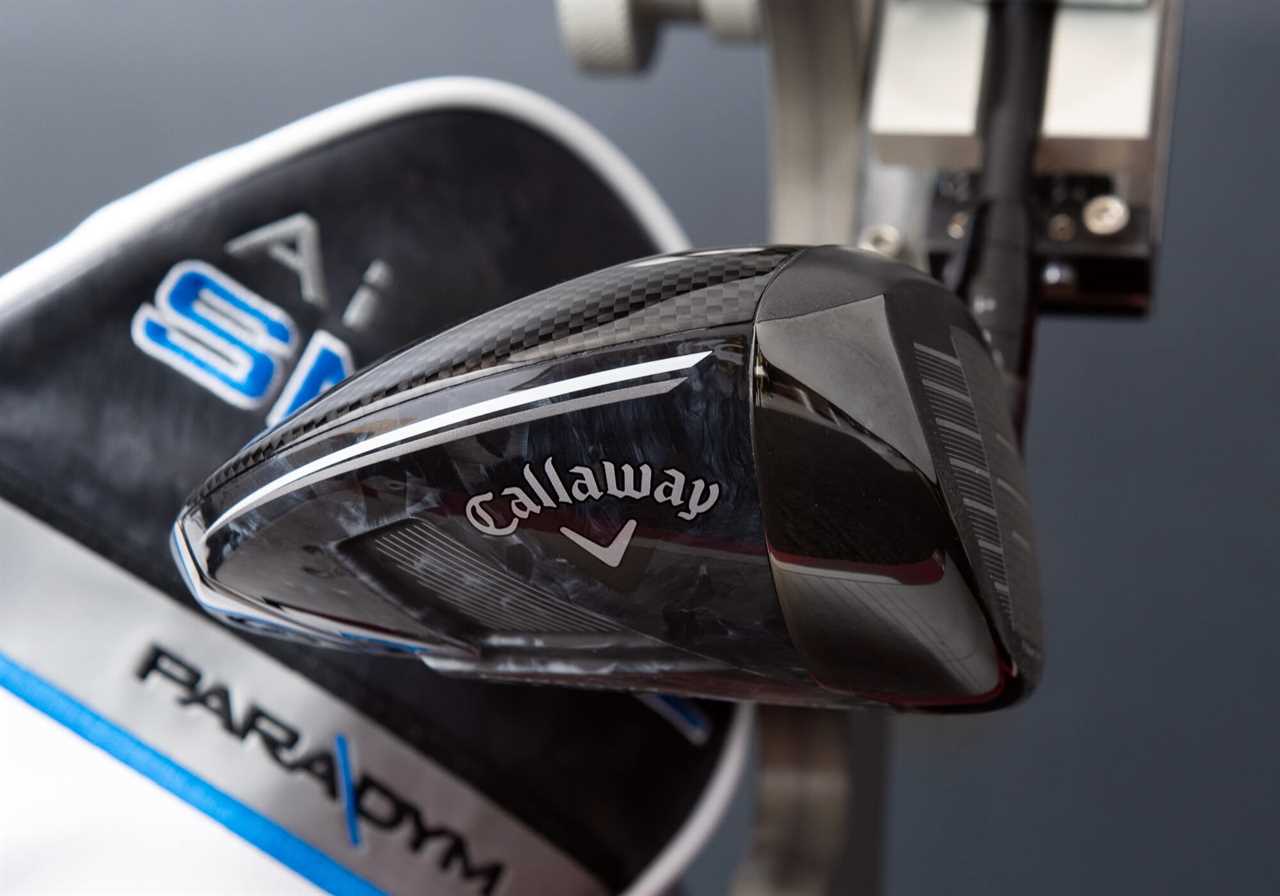
Golfers should expect about seven yards more left-side bias than the Paradym X.
There is some discussion in the market about whether consumers want products with “draw” in the name. Callaway’s research suggests the market is evenly split and believes there’s more benefit in calling it what it is.
The Callaway Paradym Ai Smoke Max D is available in nine, 10.5 and 12 degrees.
Callaway Paradym Ai Smoke Max Fast
The Max Fast the fills the place of the lightweight, Japan-spec product Callaway has typically sold under its Star platform. This time around, Callaway decided to launch Fast online and at the same price as the mainstream stuff.
Not that anybody asked but I think it’s better this way.
The story here is weight (or the lack thereof). Callaway has removed weight from the head, shaft and grip to help the target golfer (slow swingers) generate more speed with improved launch conditions.
The Paradym Ai Smoke Max Fast is available in 10.5 and 12 degrees.
Callaway Paradym Ai Smoke Triple Diamond
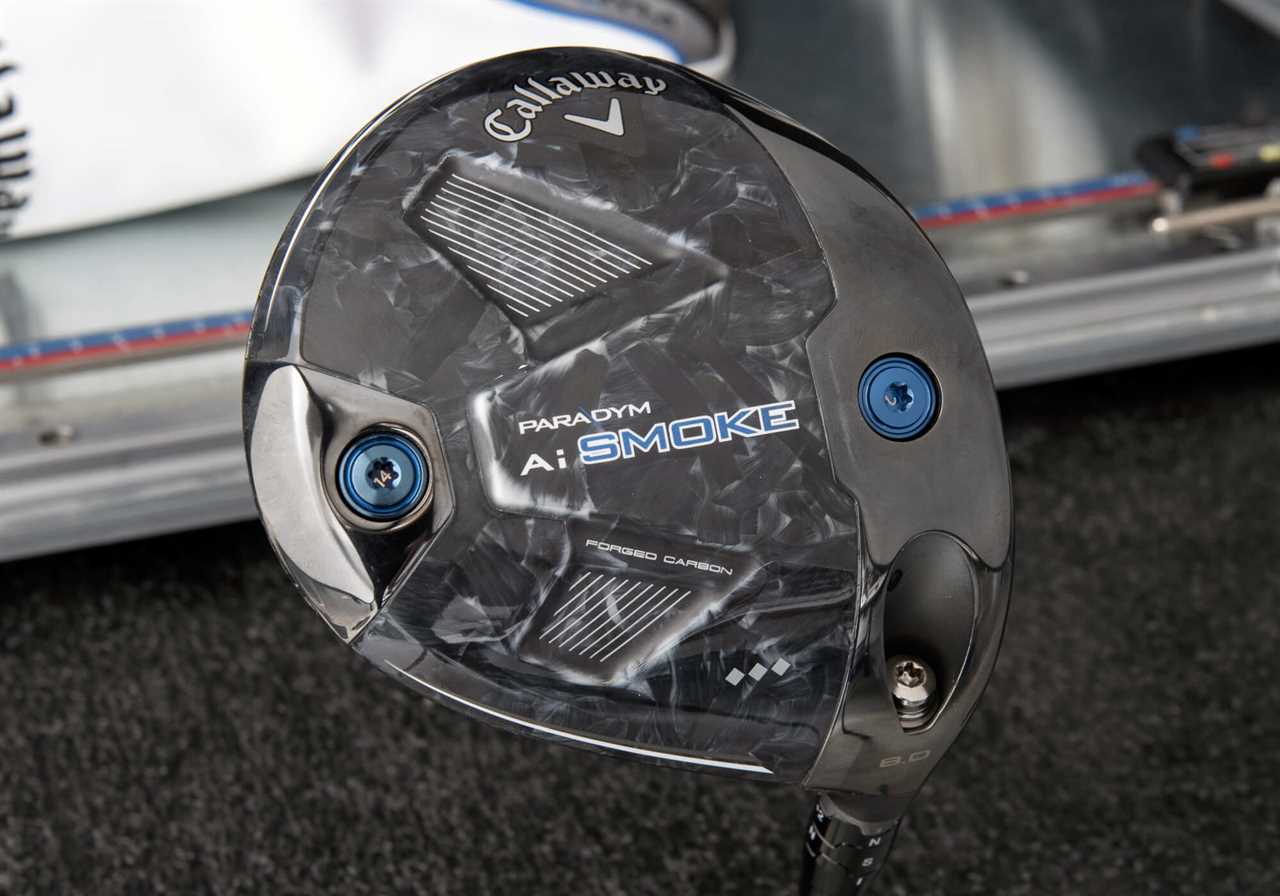
The Triple Diamond remains Callaway’s lowest-spinning and, to no small extent, its better player driver.
At 450cc, I suppose you could say it’s slightly undersized and with that, classifying it as more workable isn’t out of line.
The Swing Code for the Paradym Ai Smoke Triple Diamond is the golfer who:
- Makes mostly centered impact
- Has a high swing speed (105-120 mph)
- Swings up on the ball
- Has a neutral to in-to-out path
- Delivers the face square to the path
In addition to Callaway’s OptiFit hosel, the Triple Diamond offers swappable front-back weight to tune trajectory and spin (most golfers will see 200 to 300 rpm difference between positions).
It’s a slightly fade-biased design which should benefit golfers who fight a hook or explicitly want to fade the ball.
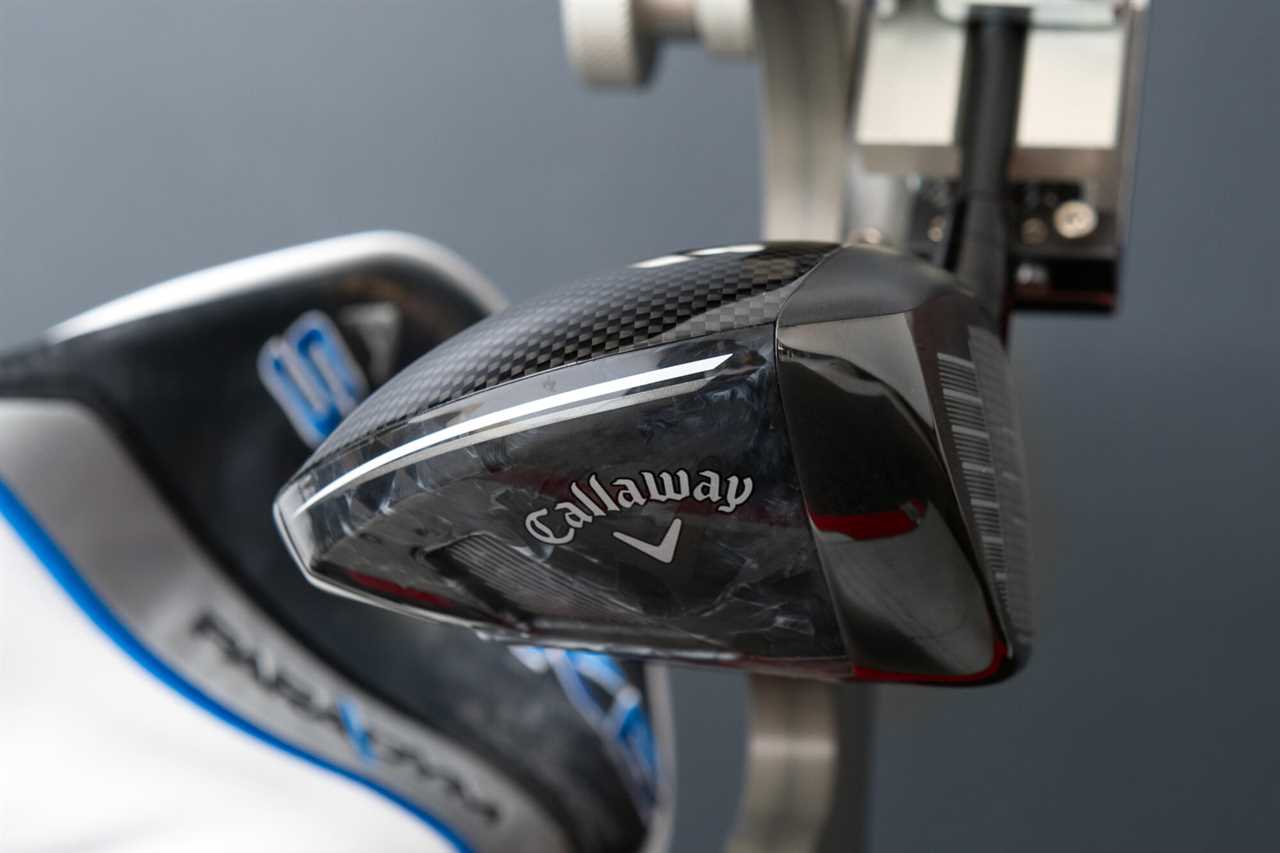
My sense of things is that this is the model that Callaway is most excited about. Triple Diamond is historically the longest driver in their lineup but it hasn’t always produced the straightest flight.
With the Ai Optimized Smart Face, some golfers in Callaway’s test cohort have seen a 30-percent improvement in dispersion. While not everyone should expect that kind of improvement, it does open the doors for a level of consistency Triple Diamond hasn’t traditionally offered and that could extend its reach in the marketplace.
The Callaway Paradym Ai Smoke Triple Diamond is available in eight, nine and 10.5 degrees.
Stock Shafts and Grips
The stock shafts for the Callaway Paradym Ai Smoke Drivers are:
- Mitsubishi Eldio (Max Fast Women’s)
- Mitsubishi Tensei Silver (Max Fast Men’s)
- Project X Cypher 2.0 (high launch)
- Mitsubishi Tensei AV Blue (mid launch)
- Project X Denali Black (low launch)
Stock grips are the Golf Pride Tour Velvet 360 and the Winn DriTech Lite in Max Fast models
What if My Swing Code isn’t a Perfect Match?

While Callaway believes every golfer will see improvements with Paradym Ai Smoke, not every golfer fits neatly into one of Callaway’s Swing Code buckets.
As noted, the closer the match, the better performance you should see, but with only four models to choose from, a lot of us will find ourselves somewhere between models.
My personal Swing Code fits aspects of the Max and the Triple Diamond. In my fitting, we ultimately settled on the Triple Diamond because of the distance advantage but it could have gone either way.
As always, I’d recommend getting fitted or, at an absolute minimum, hitting them side by side.
Hey, What About Jailbreak?
There isn’t any.
One of Callaway’s signature technologies has exited the chat. The early modeling suggested that Paradym Ai Smoke Drivers would perform better without it. Callaway prototyped versions with and without Jailbreak and when the results validated the models, the decision was made to move past Jailbreak.
How Do Paradym Ai Smoke Drivers Look and Feel?
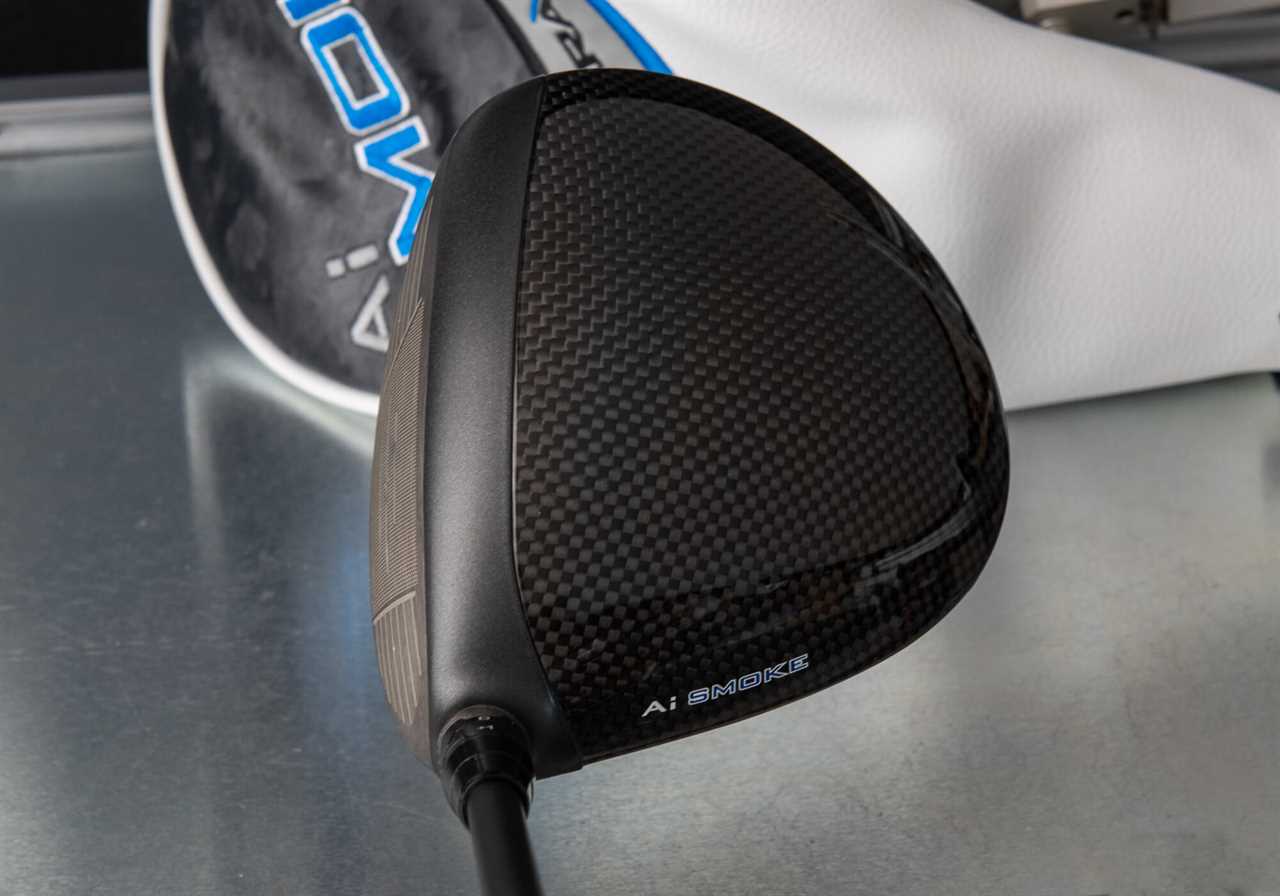
Callaway Paradym Ai Smoke Triple Diamond
This stuff is entirely subjective but I like the look of the new models. The pale gray is a significant improvement over the teal. Though I suspect some of you aren’t done with the forged carbon fiber bowling ball jokes, I’m saying Paradym Ai Smoke is the best-looking Callaway driver in years.
It’s a bit harder to explain but the design itself is just tighter. I mean that in an almost literal sense as the various pieces seem to fit together better. It looks more finished.
Crowns painted anything other than black don’t always resonate with golfers but I’ve always liked a dark gray. Paradym is no exception.
The sound and feel are improved as well.
Final Thoughts

Callaway believes Paradym Ai Smoke is breakthrough driver. That word gets tossed around more than it should but the foundation here is solid—and it speaks as much, if not more, to the Swing Code approach than it does to products themselves, though Callaway is confident in the performance.
Compared to Paradym, Callaway is seeing improvements in distance and accuracy, indoors and out with players and robots.
As always, what’s true inside the walls (and range nets) at Callaway may not be true for you but think of this as ground-floor kind of stuff.
Paradym Ai Smoke drivers are built from three sets of Swing Codes. It’s easy to see how this could evolve to include more parameters, more buckets, mixing faces with chassis … all in pursuit of something closer to a 1-of-1 driver designed just for you.
We’re still a long way from that but we’re closer today than we were yesterday, and that’s something.

Pricing and Availability
Retail price for all Callaway Paradym Ai Smoke Drivers is $599. Pre-sale begins Jan. 12, with full retail availability on Jan. 26.
For more information, visit CallawayGolf.com.
Questions?
Yeah, I know, this is a lot. If you have any specific questions about how all of this Swing Code, Smart Face, Micro Deflection stuff works, let us know and we’ll do our best to get you answers.
PS. If you don’t want to wait, or don’t want to spend the money on the latest offering, 2023 Callaway Paradym drivers have been reduced to $500.
The post Callaway Paradym Ai Smoke Drivers appeared first on MyGolfSpy.
https://mygolfspy.com/news-opinion/callaway-paradym-ai-smoke-drivers/
 Backyard GrillingWeekend WarriorsAdvice from DadBeard GroomingTV Shows for Guys4x4 Off-Road CarsMens FashionSports NewsAncient Archeology World NewsPrivacy PolicyTerms And Conditions
Backyard GrillingWeekend WarriorsAdvice from DadBeard GroomingTV Shows for Guys4x4 Off-Road CarsMens FashionSports NewsAncient Archeology World NewsPrivacy PolicyTerms And Conditions
